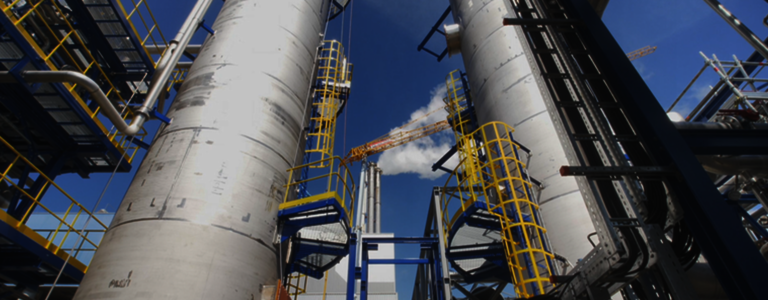
CCU/CCS: A key component for the energy transition?
To achieve the goal of climate-neutral industry, there are many who are pinning their hopes on carbon capture, utilization and storage. Using this approach, heavy industry in particular can significantly reduce its relatively high emissions.
In addition to utilities and the transport sector, industry in particular produces considerable amounts of CO2. Roughly a quarter of CO2 emissions produced by industry can be traced back to production processes such as those in iron and steel production, lime and cement production or in basic chemicals. According to experts, these so-called process emissions, which are difficult to avoid, are among the greatest impediments to climate-neutral industry.
CCU and CCS technologies can make a significant contribution to overcoming this challenge: carbon capture and utilization (CCU) and carbon capture and storage (CCS) which focuses on the safe and permanent storage of CO2 in deep geological rock formations. Both technologies have in common the initial capture of emissions, their purification and preparation for transport. “Carbon capture is particularly suitable for large industrial plants, because here it is difficult to fully replace fossil fuels in the foreseeable future,” says Massimo Pardocchi, Global Development Director Projects at Bilfinger. For the subsequent transport – preferably through a pipeline for safety and economic reasons – capture itself is not the only important factor: “For the gas mix to start the journey to its destination, it must also be strongly compressed using liquefaction and/or cooling,” says Pardocchi.
CUU Technologies can save valuable raw materials and reduce carbon emissions.
Massimo Pardocchi
Global Development Director Projects & Key Account Management, Bilfinger
Wide range of possible uses
If the CO2 is to be utilized further (CCU), very different recipients come into consideration. While in Germany, for example, it is mainly the chemical industry that depends on a supply of carbon, in the Netherlands significant quantities of CO2 are also delivered to greenhouses. Carbon can also be captured in waste-to-energy plants and utilized for the production of sodium bicarbonate, which is required in the flue gas cleaning process: “This can both save valuable raw materials
and reduce carbon emissions,” says Pardocchi. There is also promising experience with the reuse of CO2 in the production of alternative fuels, plastics and chemicals: “All these alternatives are contributing to the ultimate goal of a future circular economy where CO2 is produced, captured and recycled back to the market.”
Suitable sites for the permanent carbon storage (CCS) include depleted oil and gas fields that would otherwise be shut down by the operating companies as well as rock layers containing salt water – so-called saline aquifers. They are located in the geological subsurface at a depth of about 1,000 to 4,000 meters. In Europe, the largest storage capacities are located beneath the North Sea and the Norwegian Sea: they have natural geological structures and combined offer enough space for the storage of more than 200 billion tonnes of CO2.
Increasing requirements for carbon-neutral production
Whether and to what extent this potential will be used in the future is currently still the subject of pilot and research projects as well as climate policy discussions in many European countries. “The fact is that requirements for carbon-neutral production are increasing and society must face up to this problem,” says Pardocchi. “And because we are already obligated to achieve a significant CO2 reduction in 2030, immediate action is needed. CCS is most certainly one solution that can be implemented directly, and such an implementation is important, as is the avoidance of emissions and the use of carbon-free fuels such as hydrogen,” the Bilfinger manager is convinced. “For this reason, it is recommended that operators of larger industrial plants in particular take a close look at this technology, evaluate its potential and derive roadmaps for its possible use.”
Storage of CO2 under the North Sea
Several countries bordering the North Sea, including as Norway, the Netherlands, Belgium and the UK, have launched pilot projects to store CO2 under the North Sea floor. One of the world’s largest and most advanced projects of this kind is the Porthos project: a facility is currently being built in the port of Rotterdam to combine carbon emissions captured by industry, compress, transport and store them in gas fields under the North Sea that are no longer in use. Bilfinger is providing various services for the Porthos project, including development of a simulation model for the complete system and also supporting the engineering for parts of the project.
Learn more

Contact in case of questions:
Massimo Pardocchi
Global Development Director Projects & Key Account Management
Tel. +49 172 4595593
massimo.pardocchi@bilfinger.com

